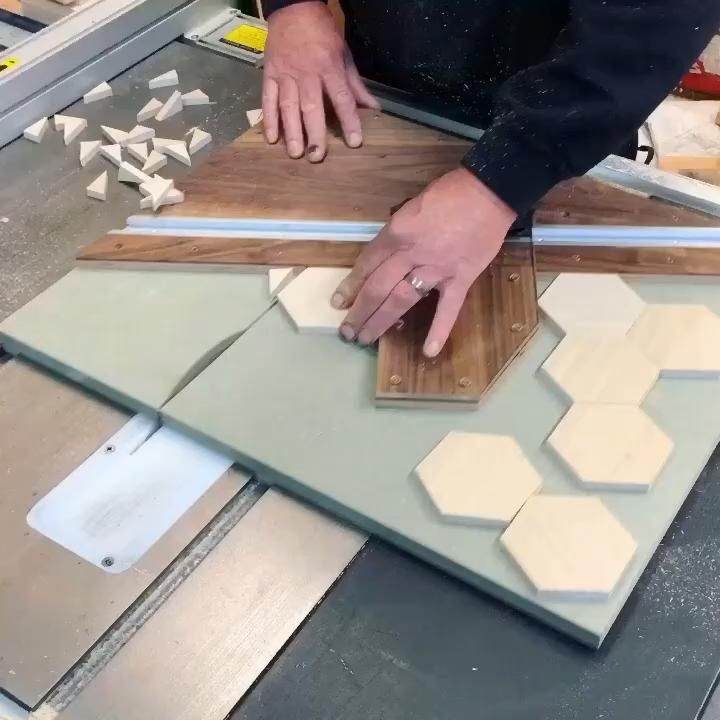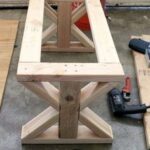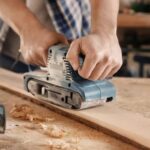Are you interested in learning how to French polish woodworking finish with shellac? French polishing is a traditional and time-honored method of finishing wood that results in a stunning, glossy, and lustrous appearance. This article will provide you with a comprehensive guide on how to achieve this beautiful finish using shellac, including the benefits of using shellac in woodworking finishing, the essential tools and materials needed, step-by-step instructions, and troubleshooting common issues.
French polishing with shellac offers numerous benefits for woodworking finishing. Shellac is a natural resin that is derived from the secretions of lac insects, making it an environmentally-friendly and sustainable option. It also dries quickly, allowing for multiple layers to be applied in a short amount of time. Additionally, shellac provides a durable and protective finish that enhances the natural beauty of the wood, making it an ideal choice for furniture and woodworking projects.
Before you begin your French polishing project, it’s important to gather the essential tools and materials needed for the process. Understanding the equipment required will ensure that you have everything necessary to achieve a professional-quality finish. With the right preparation and guidance, you’ll be able to create smooth and glossy surfaces that showcase the beauty of your woodworking pieces.
Understanding the Benefits of Using Shellac in Woodworking Finishing
Shellac is a versatile and popular choice for woodworking finishing, particularly in the art of French polishing. One of the key benefits of using shellac in woodworking finishing is its ability to produce a stunningly smooth and glossy finish. When applied correctly, shellac can enhance the natural beauty of wood, giving it a rich and lustrous appearance that is highly desirable in fine furniture and decorative woodworking pieces.
Another advantage of using shellac is its versatility. It can be used on various types of wood, including hardwoods and softwoods, as well as on both new and antique pieces. Additionally, shellac is known for its quick drying time, allowing for multiple coats to be applied in a relatively short period. Its fast drying time also makes it an ideal option for achieving a high-quality finish in a time-efficient manner.
Furthermore, shellac has excellent adhesion properties, which means it forms a strong bond with the wood surface. This results in a durable finish that can withstand daily wear and tear. In comparison to other finishes, shellac is also easy to repair and maintain, making it an attractive option for long-lasting woodworking projects.
Overall, the benefits of using shellac in woodworking finishing are vast. Its ability to create a beautiful, durable, and versatile finish has cemented its status as a preferred choice for those seeking to achieve professional-quality results through French polishing.
Essential Tools and Materials Needed for French Polishing
French polishing with shellac requires a specific set of tools and materials to achieve the best results. Here are the essential items you will need for this woodworking finishing technique:
1. Shellac Flakes: The primary component for French polishing, shellac flakes are dissolved in alcohol to create the perfect finish for wood surfaces. Choose high-quality shellac flakes for a professional-looking result.
2. Denatured Alcohol: This is used as the solvent to dissolve the shellac flakes. It’s important to use denatured alcohol specifically, as it ensures proper mixing and application of the shellac.
3. Soft Cotton Cloths: To apply the shellac evenly and smoothly, soft cotton cloths such as old t-shirts or lint-free cloths are ideal. These will prevent any unwanted texture on the finished surface.
4. Pumice or Rottenstone: These abrasives are used in conjunction with the shellac to achieve a smooth and glossy finish. They help to level and buff the shellac layers for a professional shine.
5. Shellac Pad or Mop: A traditional tool used for French polishing, a pad made from a piece of cotton wrapped in gauze or muslin is essential for applying the shellac evenly and consistently.
6. Workbench with Vise or Clamp: Having a secure workbench with a vise or clamp is important for stabilizing your woodworking piece during the French polishing process, ensuring thorough coverage of the shellac.
Now that you have an understanding of the tools and materials needed for French polishing with shellac, you can proceed to prepare your wood surface and begin mixing and applying the shellac for a beautiful finish.
Step-by-Step Guide on Preparing the Wood Surface for French Polishing
When it comes to achieving a professional-quality French polish on woodworking projects, proper preparation of the wood surface is crucial. Here is a step-by-step guide on how to prepare the wood surface for French polishing with shellac:
1. Sanding: Start by sanding the wood surface to remove any existing finish, blemishes, and imperfections. Use a progression of sandpaper grits, starting from a coarse grit (around 100) and gradually working your way up to a fine grit (around 220) for a smooth and even surface.
2. Filling grain pores: To achieve a glass-smooth finish, you will need to fill the grain pores of open-grained woods such as oak or mahogany. Use a specially formulated wood pore filler to fill these pores and create a level surface for the shellac to be applied.
3. Cleaning: After sanding and filling the grain pores, thoroughly clean the wood surface to remove any dust, dirt, or debris. Use a tack cloth or vacuum cleaner to ensure that the surface is completely free of any particles that could affect the final finish.
4. Sealing: Before applying the shellac, it is important to seal the wood surface with a coat of dewaxed shellac or sanding sealer. This initial seal will prevent uneven absorption of subsequent coats of shellac and promote better adhesion for a smooth and uniform finish.
By carefully following these steps, you can ensure that your woodworking project is properly prepared for French polishing with shellac, ultimately leading to a stunning and professional-quality finish that will showcase the natural beauty of the wood.
Detailed Instructions on Mixing and Applying Shellac for a Smooth and Glossy Finish
Preparation and Mixing
Before starting the French polishing process with shellac, it is essential to prepare the shellac mixture. Begin by choosing high-quality shellac flakes, as they will provide a better finish. The next step is to mix the flakes with denatured alcohol in a glass container.
The proportion of flakes to alcohol will depend on the desired sheen, with a higher ratio of flakes resulting in a glossier finish. Allow the mixture to sit for at least 24 hours to dissolve completely.
Applying Shellac
When applying the shellac mixture, use a cotton pad wrapped in lint-free cloth to prevent fibers from sticking to the wood surface. Apply thin, even coats using circular or figure-eight motions, working from one end of the wood piece to the other. Allow each layer to dry completely before applying the next one. It is important to build up multiple thin layers rather than applying thick coats, as this will result in a smoother and more lustrous finish.
Buffing and Polishing
After applying several coats of shellac and allowing them to dry thoroughly, buff the surface using a soft cloth or polishing pad to remove any imperfections and achieve a glossy finish. Use a lubricant such as mineral oil or petroleum jelly to aid in the buffing process, which will help bring out the luster of the shellac. Repeat this process until you have achieved the desired level of shine on your woodworking piece.
By following these detailed instructions on mixing and applying shellac for French polishing, woodworkers can achieve a smooth and glossy finish that highlights the natural beauty of their creations.
Tips and Tricks for Achieving a Professional-Quality French Polish
Achieving a professional-quality French polish with shellac requires patience, attention to detail, and the right technique. Here are some tips and tricks to help you achieve a flawless finish on your woodworking projects.
Prepare the Work Area
Before starting the French polishing process, it’s important to prepare your work area. Make sure the room is well-ventilated as shellac can produce strong fumes. Clear the space of any dust or debris that could settle on the wet shellac and ruin your finish. Additionally, ensure that your work surface is clean and level to prevent any uneven application of the shellac.
Use Proper Technique
French polishing with shellac requires a smooth and consistent application to achieve a glossy finish. Use a soft, lint-free cloth like cotton or muslin for applying the shellac. Fold the cloth into a pad and apply gentle pressure while rubbing in circular motions. Keep the cloth lightly moistened with shellac but not dripping wet to prevent over-application.
Practice Patience
One of the key elements in achieving a professional-quality French polish with shellac is patience. Each layer of shellac needs time to dry completely before applying the next coat. Rushing through this process can result in streaks, bubbles, or an uneven finish. Allow each coat of shellac to dry thoroughly before applying subsequent coats, and resist the temptation to rush through this critical step.
By following these tips and tricks, you can achieve a professional-quality French polish on your woodworking projects using shellac. With patience, proper technique, and attention to detail, you’ll be able to create beautifully finished pieces that showcase the natural beauty of wood while providing durable protection for years to come.
Troubleshooting Common Issues in French Polishing With Shellac
French polishing with shellac can be a rewarding woodworking finishing technique, but it is not without its challenges. Understanding common issues that may arise during the process and knowing how to troubleshoot them can make a significant difference in the final result of your woodworking project.
One common issue that woodworkers encounter when French polishing with shellac is the appearance of streaks or unevenness in the finish. This can be caused by improper application techniques, such as not using the right amount of pressure when applying the shellac, or using a contaminated applicator pad.
To remedy this issue, it is essential to ensure that your applicator pad is clean and free from any debris or old finish residue. Additionally, applying shellac with consistent and even pressure will help achieve a smooth and flawless finish.
Another common issue in French polishing with shellac is the formation of bubbles or air pockets in the finish. This can happen if the shellac is applied too thickly or if it dries too quickly, trapping air underneath the surface. To avoid this problem, make sure to thin your shellac properly and apply thin, even coats to allow for proper drying time and minimize the risk of air entrapment.
| Common Issues | Troubleshooting Methods |
|---|---|
| Streaks or unevenness | Ensure clean applicator pad; Apply consistent pressure |
| Bubbles or air pockets | Thinning shellac properly; Applying thin, even coats |
Lastly, one other challenge woodworkers face when French polishing with shellac is achieving a high-gloss finish without visible brush marks. This can be addressed by using high-quality brushes specifically designed for fine finishing work and practicing proper brushing techniques. Additionally, ensuring that each layer of shellac is adequately cured before applying another coat will help achieve a flawless glossy surface.
By being aware of these common issues and implementing the appropriate troubleshooting methods, woodworkers can overcome challenges in French polishing with shellac and achieve professional-quality results for their woodworking projects.
Maintenance and Care for Shellac-Finished Woodworking Pieces
Maintaining and caring for shellac-finished woodworking pieces is essential to ensure the longevity and beauty of the finish. With the proper maintenance, shellac-finished items can last for many years, creating a stunning and durable surface. In this section, we’ll discuss some important tips and techniques for effectively caring for and maintaining your shellac-finished woodworking pieces.
One of the key benefits of shellac as a woodworking finish is its ability to be easily repaired. If your shellac finish becomes worn or damaged over time, it can be easily touched up or repaired without having to strip and refinish the entire piece. This makes shellac an attractive option for those looking for a low-maintenance wood finish.
To care for your shellac-finished woodworking pieces, it’s important to routinely dust them with a soft, lint-free cloth or microfiber duster. Regular dusting will help prevent the buildup of dirt and grime on the surface of the finish, keeping it looking clean and vibrant. Additionally, avoid using harsh chemical cleaners or solvents on shellac finishes, as these can damage the delicate surface.
Another important aspect of maintenance is protecting shellac-finished items from direct sunlight and excessive moisture. Prolonged exposure to UV rays can cause the shellac finish to become discolored or develop a cloudy appearance. Similarly, high humidity or moisture can cause the finish to become tacky or even soften over time. To prevent these issues, position your shellac-finished pieces away from direct sunlight and maintain a consistent indoor environment with moderate humidity levels.
| Benefit of Shellac Finish | Low-Maintenance Maintenance |
|---|---|
| Easily Repairable | Routinely Dusting |
| Protection from UV Rays | Avoid Harsh Chemical Cleaners |
| Protection from Moisture | Moderate Humidity Levels |
Exploring Alternative Methods for Achieving a French Polish With Shellac
In conclusion, mastering the art of French polishing with shellac can greatly enhance the quality and appearance of your woodworking projects. Understanding the benefits of using shellac, such as its fast drying time, easy repairability, and beautiful finish, is essential for achieving professional results. By following the step-by-step guide for preparing the wood surface and applying the shellac, you can create a smooth and glossy finish that will showcase the natural beauty of the wood.
Furthermore, it’s important to remember that achieving a professional-quality French polish takes time, practice, and patience. Using the essential tools and materials, along with implementing tips and tricks for success, will help you perfect your technique. And in case of common issues during the process, troubleshooting methods can be employed to salvage the finish.
Lastly, while traditional French polishing is an excellent method for finishing woodworking pieces with shellac, there are alternative methods worth exploring. These methods may offer a different approach to achieving a French polish or provide solutions to specific challenges. Whether sticking to traditional techniques or venturing into alternative methods, mastering how to French polish woodworking finish with shellac opens up endless possibilities for creating stunning pieces that stand out for their beauty and craftsmanship.
Frequently Asked Questions
Can You Do French Polish With Shellac?
Yes, you can do French polish with shellac. French polishing is a technique of applying thin layers of shellac to create a highly polished finish on wood surfaces.
What Cut of Shellac for French Polishing?
The most commonly used cut of shellac for French polishing is a 1-pound cut, which means one pound of shellac flakes dissolved in one gallon of alcohol. This creates a thinner solution that is easier to apply in multiple thin layers.
Can You French Polish With Zinsser Shellac?
Yes, Zinsser Shellac can be used for French polishing. Zinsser Shellac is a popular brand known for its quality and suitability for various woodworking and finishing projects, including French polishing techniques.

Hi everyone! I’m a woodworker and blogger, and this is my woodworking blog. In my blog, I share tips and tricks for woodworkers of all skill levels, as well as project ideas that you can try yourself.





